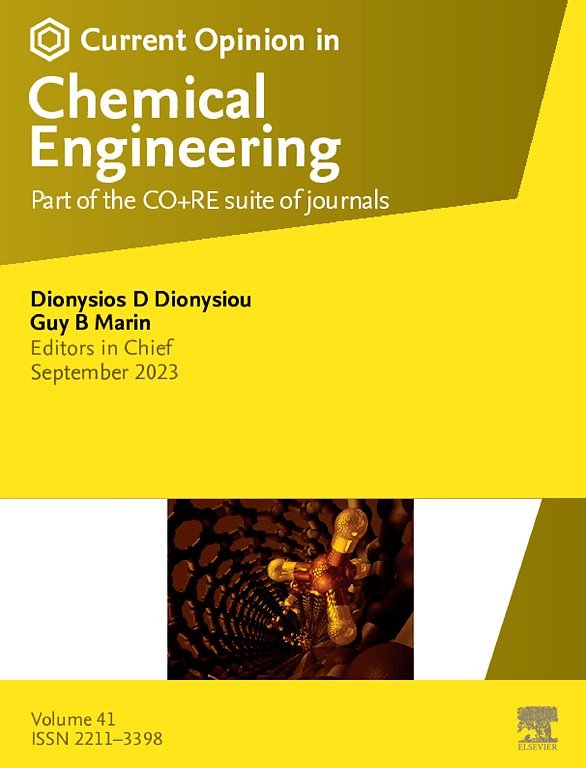Next-generation nanobioengineered materials for micro- and nano-plastic detection
IF 6.8
2区 工程技术
Q1 BIOTECHNOLOGY & APPLIED MICROBIOLOGY
引用次数: 0
Abstract
Micro- and nano-plastics (MNPs) have garnered global attention as pervasive and emerging contaminants due to their potential risks to humans and the environment. Their toxicity, bioaccumulation, and oxidative stress disrupt ecosystems, demanding an urgent need for risk monitoring. A thorough understanding of the extent of the problem and the need for an amicable solution utilizing nanobioengineered materials is highly desired owing to their unique properties, such as tailored surface chemistry, specificity, and high sensitivity. These properties allow them to interact with the contaminants at the molecular level, making them suitable for MNP detection. Moreover, they have the potential to overcome challenges, such as the complex environmental matrices, data reproducibility, and inefficient sampling faced by pre-existing techniques, making them a promising tool for detecting MNPs. This review presents the importance of next-generation nanobioengineered materials for developing biosensors for MNP detection, and efforts have also been directed to enrich the awareness of the researchers working in this domain by providing innovative solutions to challenges faced by pre-existing techniques. Additionally, utilizing these materials in biosensing devices helps to attain the Sustainable Development Goals of the United Nations by bridging Nano-biotechnology and environmental science, fostering future research, and shaping policies to combat MNP pollution.
用于微和纳米塑料检测的下一代纳米生物工程材料
微纳米塑料(MNPs)由于其对人类和环境的潜在风险而成为普遍存在的新兴污染物,引起了全球的关注。它们的毒性、生物积累和氧化应激破坏了生态系统,迫切需要进行风险监测。由于纳米生物工程材料的独特性质,如定制的表面化学、特异性和高灵敏度,对问题的程度和利用纳米生物工程材料的友好解决方案的需求的透彻理解是非常需要的。这些特性使它们能够在分子水平上与污染物相互作用,使它们适合于MNP检测。此外,它们有潜力克服现有技术面临的挑战,如复杂的环境矩阵、数据可重复性和低效率采样,使它们成为检测MNPs的有前途的工具。这篇综述介绍了下一代纳米生物工程材料对开发用于MNP检测的生物传感器的重要性,并努力通过提供创新的解决方案来丰富在这一领域工作的研究人员的认识,以应对现有技术面临的挑战。此外,在生物传感设备中使用这些材料有助于实现联合国的可持续发展目标,通过将纳米生物技术与环境科学联系起来,促进未来的研究,并制定政策来对抗MNP污染。
本文章由计算机程序翻译,如有差异,请以英文原文为准。
求助全文
约1分钟内获得全文
求助全文
来源期刊

Current Opinion in Chemical Engineering
BIOTECHNOLOGY & APPLIED MICROBIOLOGYENGINE-ENGINEERING, CHEMICAL
CiteScore
12.80
自引率
3.00%
发文量
114
期刊介绍:
Current Opinion in Chemical Engineering is devoted to bringing forth short and focused review articles written by experts on current advances in different areas of chemical engineering. Only invited review articles will be published.
The goals of each review article in Current Opinion in Chemical Engineering are:
1. To acquaint the reader/researcher with the most important recent papers in the given topic.
2. To provide the reader with the views/opinions of the expert in each topic.
The reviews are short (about 2500 words or 5-10 printed pages with figures) and serve as an invaluable source of information for researchers, teachers, professionals and students. The reviews also aim to stimulate exchange of ideas among experts.
Themed sections:
Each review will focus on particular aspects of one of the following themed sections of chemical engineering:
1. Nanotechnology
2. Energy and environmental engineering
3. Biotechnology and bioprocess engineering
4. Biological engineering (covering tissue engineering, regenerative medicine, drug delivery)
5. Separation engineering (covering membrane technologies, adsorbents, desalination, distillation etc.)
6. Materials engineering (covering biomaterials, inorganic especially ceramic materials, nanostructured materials).
7. Process systems engineering
8. Reaction engineering and catalysis.
 求助内容:
求助内容: 应助结果提醒方式:
应助结果提醒方式:


